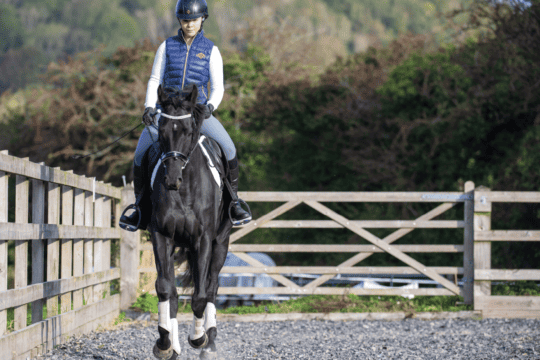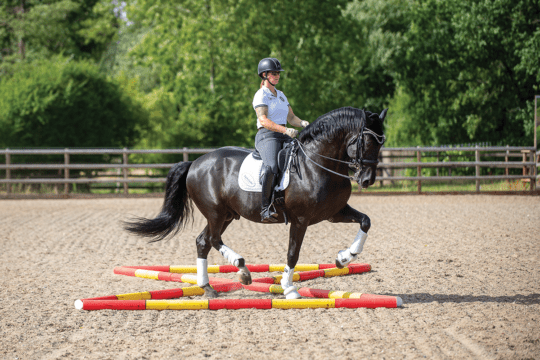Fancy having a go at showing this season? Professional producer Louise Bell is here to help you achieve your best
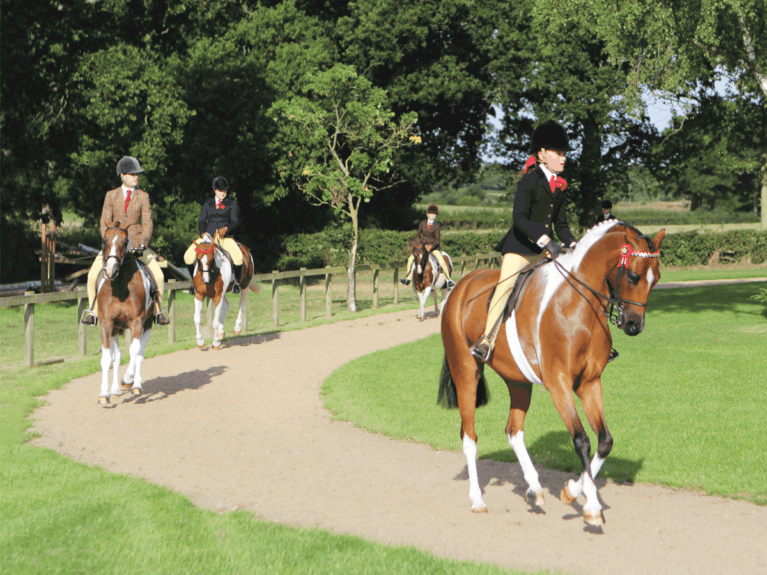
Professionals succeed through hard work and practice. However much or little showing experience you have, there are some simple ways to improve your chances of doing well. It all begins when you arrive at the show. My pet hate is being late and it’s frustrating to see people arrive without enough time to spare, which then affects their whole performance.
As soon as you’ve parked your lorry or trailer, head to your ring and check with the steward as to how the classes are progressing. The rules say that classes can start 15 minutes early and you don’t want to be caught out. Plus, walking to the arena will help you work out the layout of things and how long it will take you to get back there with your horse. At bigger shows, it can be quite a trek.
Top Tip – Preparation is key. Think outside the box – if the show is in the afternoon and is close by, you could give your horse a little bit of work at home before you go, then bath, plait and off you go.
Make the most of your warm-up
How you warm up depends on your horse. If he’s highly strung, then lungeing can be very beneficial. Don’t worry about how much time he needs – your ultimate goal is for him to go really well for you and then for a stranger (the judge). Your responsibility is to prepare your horse for that, whether it takes 10 minutes or 40. On the other hand, don’t wear him out – the judge doesn’t want to be kicking him along.
It’s much better to arrive early than late. You can get him off the lorry and give him a bit of light work and the chance to see the scenery, then put him away and offer him a drink and haynet. If you do this, you will have a much better chance of your horse performing his best in the arena, than if you screech into the lorry park, tack up and trot straight into your class.
I would advise not to gallop in the warm-up, unless your horse needs firing up. If you do too much gallop, then your horse is likely to anticipate all the time, which you don’t want. However, if he is the type who needs opening up, then you probably do need to give him a short gallop, but be mindful of other competitors around you when you do this. Otherwise, definitely save it for the ring.
Find your own space within the areas sectioned off for competitors to warm up in. Don’t get rammed in among everybody else, because it will affect how much work you can do, and is likely to distract you and your horse.
If your best-laid plans to be early were thwarted by trouble loading or a blowout on the way, don’t worry. Take a deep breath and relax – your horse will pick up on tension, which will only make things worse and, besides, classes are often running late. If your warm-up is limited, just make sure that you’ve been through all three paces thoroughly in the warm-up.
When the class starts
It’s important to understand the hierarchy of the class. The judges (both ridden and conformation) will have a steward to assist them, who will tell you what to do and when. So while you’re there to impress the judges, it’s also essential that you listen to the steward.
Top tip – The steward will want your number – check you’re wearing it!
Stage 1 – the ride around
Enter the arena at walk with the other competitors – don’t begin bunched up behind another horse, though. Give yourself as much space as possible – ideally two horses’ length from the preceding competitor. If you’re too close, the judge can’t see your horse properly. Encourage a relaxed, free walk. Walk is the most important gait because it’s the most time the judge spends looking at you, so sit tall, open your chest and smile – it all adds to the picture you’re presenting to the judge.
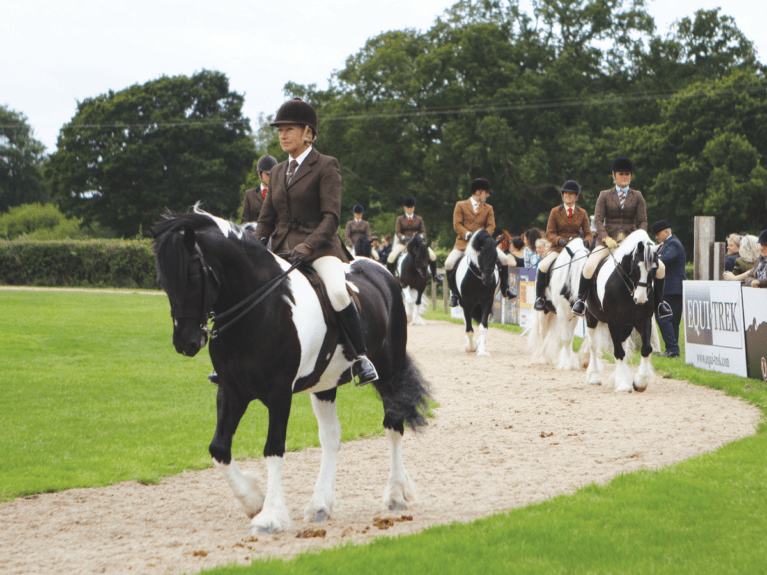
Next up is the trot. Every second counts – that judge could be looking at you, so focus on your horse’s way of going and don’t slouch.
When it’s time to canter, pick your moment to ask for a transition. You’ll be asked to change the rein at some point, but don’t just follow someone else who you think has been asked to change the rein, look at the steward to make sure you’re doing the right thing. Canter around the corner onto the diagonal, then trot for a few strides and pick up canter again in the corner. It’s not long now until you’ll be asked to gallop.
When the time comes for the gallop, don’t just go because the steward has asked you. Remember, you only get one shot at this, so if you need to ride a circle or rev up your horse, then do it.
After the gallop, the steward will ask you to come into the lineup in the judge’s order of preference. Wherever you’re pulled in, don’t just go from canter straight into the lineup. Remember, the judge is going to ride your horse next, so he needs to be thinking calm, sensible thoughts to be a good ride for them.
Top tips
- Don’t be nervous. Feel it’s your ring, not anyone else’s. If you don’t demand attention then you won’t get it – no need for a cheesy smile, but be confident.
- Be courteous to other people. If someone is crowding you, it’s best to just move away from them. You can politely ask them not to do it, but not in front of the judge.
- Whatever has happened outside the ring – such as your horse being tricky, you must keep an eye on the judge.
- If you need to readjust your brakes, ensure your judge isn’t watching you. Sometimes these things happen – you must be prepared.
Stage 2 – judge’s ride
The steward will come around to adjust your stirrups for the judge to ride, so be ready for this. When the judge comes to your horse, greet them politely, then stand in front of your horse holding him and occupying him while the judge mounts. Then step quickly out of the way when the judge is ready to ride off.
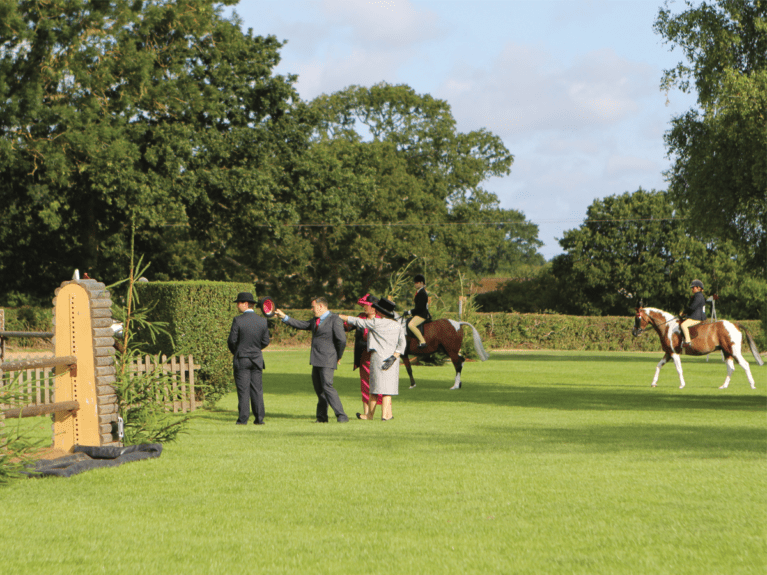
Top tips
- Make sure tack is in good condition – there’s nothing worse for the judge than kit that is badly maintained. Keep it clean and supple, but don’t over oil it so it’s greasy and slippery.
- However your horse goes, if the saddle is comfy it will feel even better. Invest in the best tack you can afford. It pays off in the end.
Stage 3 – the conformation assessment
When the judge dismounts after the ride, it’s time to strip your horse for the conformation judge (this means removing his saddle). Watch what everyone else is being asked to do – usually the steward will ask you to walk your horse away from the judge, then trot back towards him and perhaps past him, too.
After the conformation assessment, tack up again and remount your horse. When all the entrants have been judged, you will be asked to walk large around the arena. Again, keep plenty of space between you and the horse in front. The ride and conformation judges will confer about what they’ve felt and seen, and decide on the places, but they may also wish to confirm their thoughts by checking the horses as they walk around, so it’s important to ensure you’re still showing off your horse to his best.
At the end of the day, there is only one happy person – the winner. But if your horse has gone well and you know you presented him to the best of your and his ability, then that’s what matters. Showing is subjective, so enjoy the fun of it and don’t take things to heart.
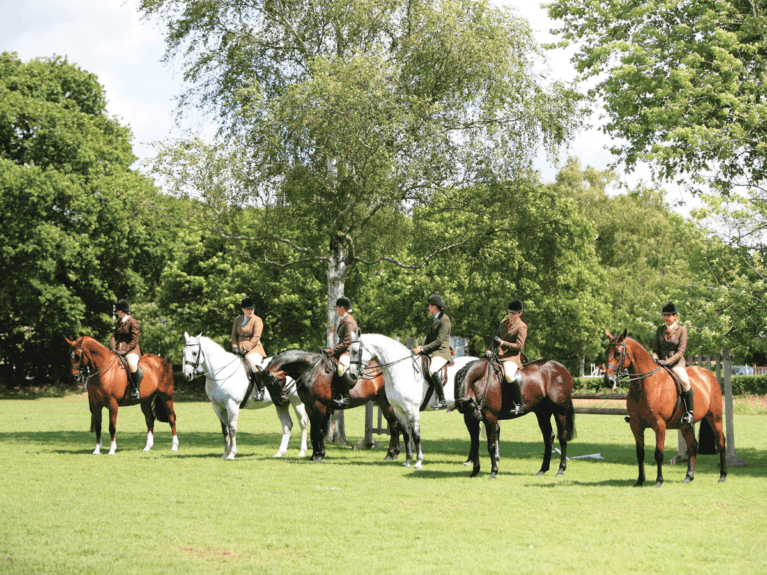
Different class types
If you pick the wrong type of class or division for your horse then, no matter how carefully you prepare him and how well he goes for the judge, you’ll never do well. Some horses could be entered in different classes, and it takes a lot of experience and a trained eye to know which is the best class for an individual horse. Don’t be afraid to ask for help from a top rider – so long as you approach us at a quiet moment, I don’t know a single professional who wouldn’t be pleased to help advise.
Working Hunter – split into novice and open classes. Horses can by any height (but must be more than 148cm) and classes are divided by the weight they can carry. Working hunters can be any breed. I personally prefer more modern types, but there are plenty of old fashioned hunters on the circuit who do well in classes. So long as your horse has the right conformation, ability and temperament, there’s nothing to stop you trying working hunter classes.
- Lightweight – for horses who can carry 13 stone and under
- Heavyweight – division for horses who can carry more than 13 stone.
To decide which division to enter, think about your horse’s bone and his type. A more quality horse will be a lightweight worker, while a more weight-carrying or middle to heavy type will be a heavyweight worker. Different shows might have a combination of Novice, Amateur, Restricted and Open classes. To work out which is right for you, you’ll need to read up, speak to the showing body under whose rules the show is run, or ask an expert.
Ridden Hunter – similar to working hunter, but you won’t be asked to jump. This class is split into four divisions – small, lightweight, middleweight and heavyweight.
- Small – 154cm and under, and like a mini middleweight in type
- Lightweight – the sort of horse you’d imagine a lady to be out hunting on. He must have quality, but not be too big.
- Middleweight – must be able to carry up to 14st, so it’s important to think about bone. It’s important that the body and the amount of bone match – I see too many horses with big bodies on small legs, and they’re not true middleweights.
- Heavyweight – must be able to carry a man out hunting all day.
Riding Horse – more quality than a lightweight hunter, but not as fine as a hack. This class is split into two divisions – small and large.
- Small – no larger than 154cm
- Large – over 154cm
Show Hack – this is the ultimate quality horse, and embodies beauty and perfection. Again, the class is split into two divisions.
- Small hack – 144–154cm
- Large hack – 154–160cm
Cob – these have become very popular in recent years. Classes are split into two divisions – lightweight and heavyweight – depending on how much bone they have. The key is to be very honest about your horse’s type – it’s no good having a big, chunky body if your horse doesn’t have the bone to go with it. Remember, a cob isn’t just a hogged hunter. Whichever division you enter, remember that the height limit is 153cm. Realistically, almost all the horses in the class will be this size – a 144cm cob would look a lot smaller than the others in the class, which I think is a shame. There are now maxi cob classes for cobs who won’t measure in for the regular divisions.




